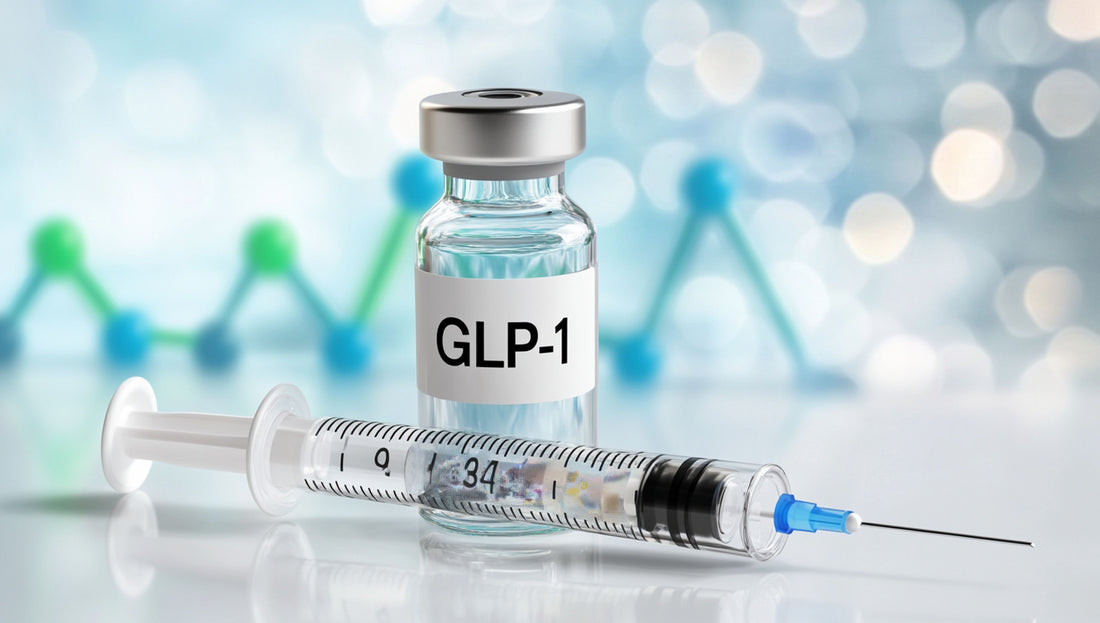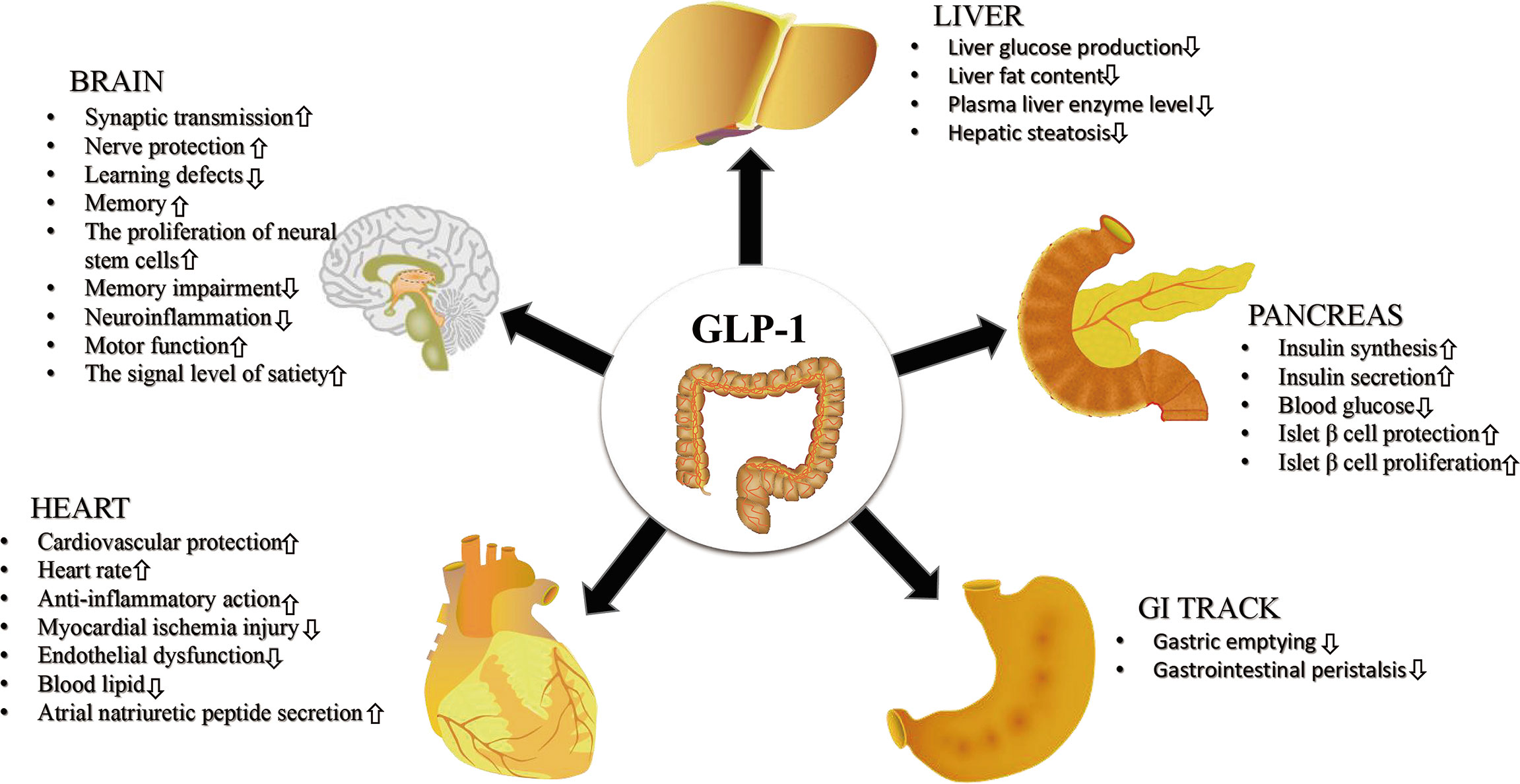
What Are GLP-1s? A Complete Guide to the Medications Everyone’s Talking About
Share
It feels like everywhere you turn, people are talking about Ozempic, Wegovy, or Mounjaro. They’re not just popping up in doctor’s offices or medical journals anymore—they’re on TikTok (where #Ozempic alone has over 1.5 billion views), splashed across health magazines, and even creeping into everyday dinner table conversations.
These medications—known as GLP-1 receptor agonists—have become a cultural and medical phenomenon, and for good reason. They are changing the way doctors, patients, and even the general public think about weight management and type 2 diabetes.
Disclaimer:
The information provided on this website is for educational purposes only and is not intended as medical advice. It should not be used to diagnose, treat, cure, or prevent any health condition. Always seek the guidance of your physician or other qualified health provider with any questions you may have regarding your health, medical conditions, or before making any changes to your diet, supplements, or treatment plan. Never disregard professional medical advice or delay seeking it because of something you have read here.

For decades, the narrative around weight loss was built on discipline and willpower: eat less, move more, and try harder. Yet, research shows that over 95% of diets fail long-term, leaving millions frustrated and hopeless. That’s why GLP-1s are so revolutionary—they shift the conversation from blame and willpower to biology and support.
But here’s where things can get confusing: with all the hype comes questions.
👉 What exactly are GLP-1s?
👉 How do they work in the body?
👉 And why are so many people calling them “game changers”?
This article breaks it all down in clear, simple terms—helping you understand the science, the hype, and what it all means for your health.
What Exactly Are GLP-1s?
GLP-1 stands for glucagon-like peptide-1, a natural hormone released in your gut right after you eat. It belongs to a family of hormones known as incretins, which play a vital role in how your body handles food.
Think of GLP-1 as your body’s internal traffic controller for appetite and metabolism. Once food enters your stomach, GLP-1 is released and sends signals to different parts of your body:
- It tells your brain, “You’re full, stop eating.”
- It helps your pancreas release insulin at the right time, keeping blood sugar stable.
- It slows down digestion, so food stays in your stomach longer, which extends the feeling of satisfaction.

Did you know? Studies show that GLP-1 can reduce overall daily calorie intake by up to 30% because people naturally feel full sooner and stay full longer.
In short, GLP-1 isn’t some foreign substance—it’s a hormone your body already makes. What scientists have done with medications is simply amplify its natural power.
How Do They Work in the Body?
Here’s where GLP-1 medications (like Ozempic, Wegovy, and Mounjaro) come in. They are called GLP-1 receptor agonists—fancy wording that means they mimic your body’s natural GLP-1 hormone but stay active much longer.
That’s why people often report big changes within weeks:
- Slower digestion → Food doesn’t rush through your stomach. A bowl of soup or half a sandwich might keep you satisfied for hours.
- Brain signals of fullness → The medication “switches on” your satiety center in the brain, making overeating far less tempting.
- Improved insulin control → By helping your pancreas release insulin more effectively, blood sugar spikes and crashes are reduced.
- Reduced cravings → Instead of constant mental battles with snacks or sweets, many patients say food feels less controlling.

Clinical research highlights: In a 68-week clinical trial published in the New England Journal of Medicine, people taking semaglutide (the ingredient in Ozempic/Wegovy) lost an average of 15% of their body weight compared to just 2.4% in the placebo group.
Essentially, GLP-1 meds shift the biology of eating in your favor. Instead of constantly fighting hunger with willpower, your body naturally helps you eat less and feel more balanced.
How GLP-1 Medications Work
Scientists created GLP-1 receptor agonists to mimic this natural hormone—but with stronger, longer-lasting effects.
That’s why people on these medications often experience:
- Fullness after smaller meals
- Fewer cravings throughout the day
- More stable energy levels
- Gradual, sustainable weight loss
In fact, clinical trials show patients on semaglutide (Ozempic/Wegovy) lose on average 15% of their body weight in just over a year, compared to only 2–3% with lifestyle changes alone.

It’s not a quick fix or “magic shot”—it’s science giving your body the tools to work the way it’s supposed to.
GLP-1 vs. Dual GIP/GLP-1: The Next Generation
Some newer drugs, like Mounjaro (tirzepatide), go beyond GLP-1 by also targeting a second hormone called GIP (glucose-dependent insulinotropic polypeptide).
- GLP-1 → curbs appetite, slows digestion, stabilizes blood sugar
- GIP → enhances insulin sensitivity and metabolism
Together, they form a powerful tag team, making weight loss and blood sugar control even more effective.

Studies show tirzepatide can deliver 22.5% weight loss, rivaling the results of bariatric surgery.
The Most Common GLP-1 Medications
| Medication | Ingredient | How It’s Taken | Main Use |
|---|---|---|---|
| Ozempic | Semaglutide | Weekly injection | Type 2 diabetes |
| Wegovy | Semaglutide | Weekly injection (higher dose) | Weight loss |
| Rybelsus | Semaglutide | Daily pill | Diabetes, weight management |
| Trulicity | Dulaglutide | Weekly injection | Type 2 diabetes |
| Victoza | Liraglutide | Daily injection | Diabetes |
| Mounjaro / Zepbound | Tirzepatide | Weekly injection | Dual GIP/GLP-1, weight & glucose control |
Why GLP-1s Are So Popular
For years, weight loss advice boiled down to “eat less and exercise more.” But for many, that approach simply didn’t work long-term.
GLP-1s changed the game by addressing the root cause—biology. By reducing hunger signals, calming cravings, and supporting blood sugar balance, they make healthy choices feel less like a battle.
That’s why patients describe the experience as “life-changing.” Instead of fighting their bodies, they finally feel in sync with them.

Who Might Benefit from GLP-1s?
GLP-1 medications are commonly prescribed for:
- People with type 2 diabetes needing better blood sugar control
- Adults with obesity or overweight, especially with related conditions like high blood pressure or sleep apnea
- Select patients seeking sustainable weight management
But they’re not for everyone. Always consult your doctor to see if you’re a good candidate.
Final Thoughts
GLP-1 medications like Ozempic, Wegovy, and Mounjaro are more than a passing health trend—they represent a major breakthrough in how we treat type 2 diabetes and obesity. By working with your body’s natural biology instead of against it, they make weight loss and blood sugar management more achievable and sustainable than ever before.
But here’s the key takeaway: GLP-1s are tools, not magic bullets. They work best when paired with healthy lifestyle changes—like balanced eating, regular movement, stress management, and the right supplements to keep your energy, skin, and overall health thriving.

If you’re considering GLP-1 therapy, start the conversation with your doctor. And while you’re on your journey, support your body with science-backed essentials that help you feel and look your best.
👉 Explore Rejuvessencee’s official store for wellness solutions designed to complement your GLP-1 treatment and keep you feeling strong, confident, and in control.
Want more support on your GLP-1 journey?
Join our VIP list for early access to resources, supplements, and science-backed strategies that help you protect your hair, skin, and energy while on GLP-1s.
FAQs
1. Are GLP-1 medications safe?
Yes, for most people. The most common side effects are nausea, vomiting, or stomach upset, which often fade over time.
2. How soon do GLP-1s start working?
Some patients notice changes in appetite within days, but weight loss results typically take weeks to months.
3. Will I have to take GLP-1s forever?
For many, yes—similar to long-term treatments for blood pressure or cholesterol. Stopping often leads to weight regain.
4. What’s the difference between Ozempic and Wegovy?
Both contain semaglutide. Ozempic is for diabetes, while Wegovy uses higher doses specifically for weight loss.
5. Can GLP-1s replace diet and exercise?
No. They make lifestyle changes easier, but you’ll get the best results when combining them with nutrition, exercise, and healthy habits.